Southern Africa - South Africa, Botswana, Zimbabwe, Zambia, Namibia
August 23 - September 15, 2016
Part Three, Page Four - Hwange National Park, Zimbabwe

A large herd of buffaloes in Hwange.
Females have their first calves at age 4 or 5.
They usually calve only once every two years.
Female offspring usually stay in the natal herd,
but males leave when they are about 4 years old.

Although young may be born throughout the year, most births
occur in the rainy season when abundant grass improves the nutritional level
for the females when they are pregnant or nursing. The female
and her offspring have an unusually intense and prolonged relationship.
Calves are suckled for as long as a year and during this time are
completely dependent on their mothers.
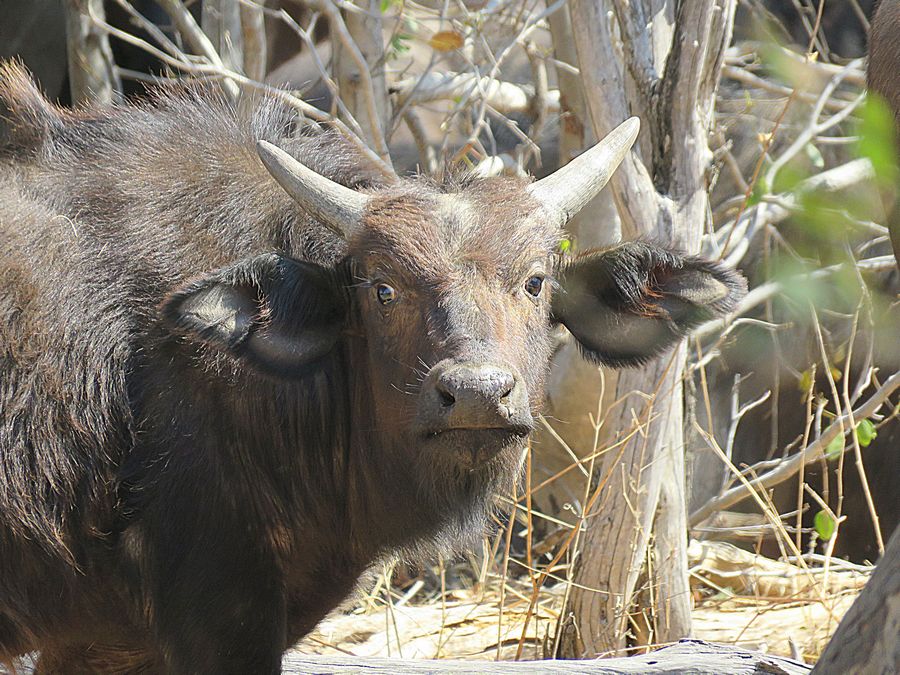
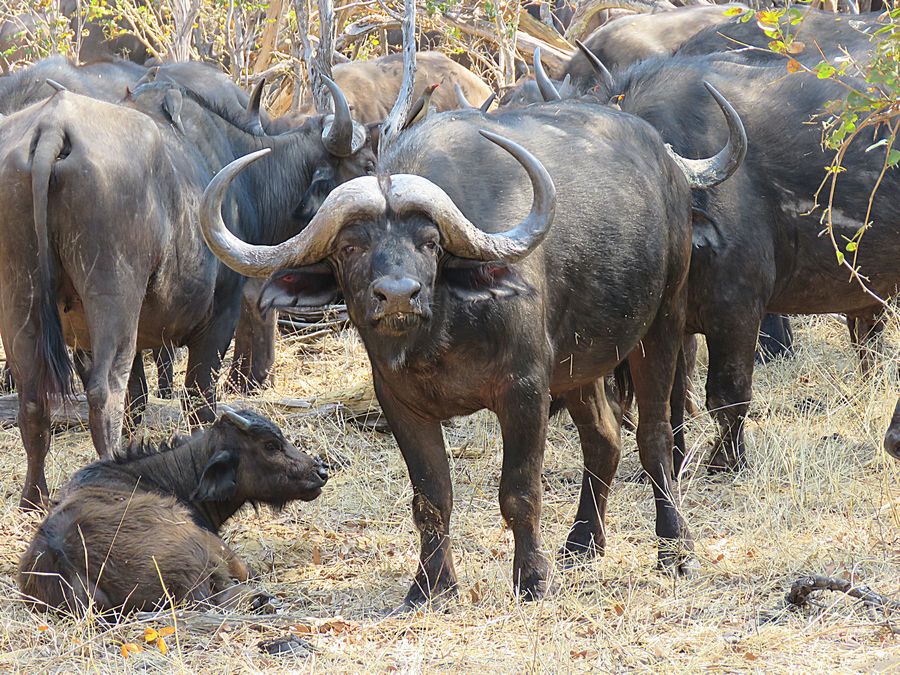
If attacked, the adults form a circle around the young and face outward.
By lowering their heads and presenting a solid barrier of sharp horns,
it is difficult for predators to seize a calf. This effective group
defense even allows blind and crippled members of the herd to survive.
So, predators do not have a major impact on buffalo herds;
it is the old, solitary-living males that are most likely to be taken by lions.
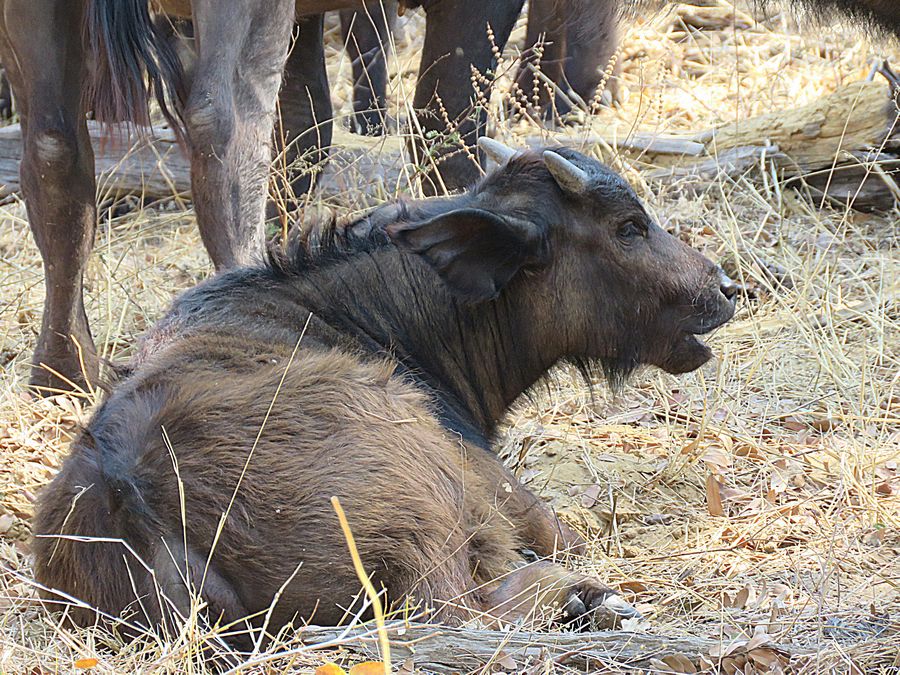
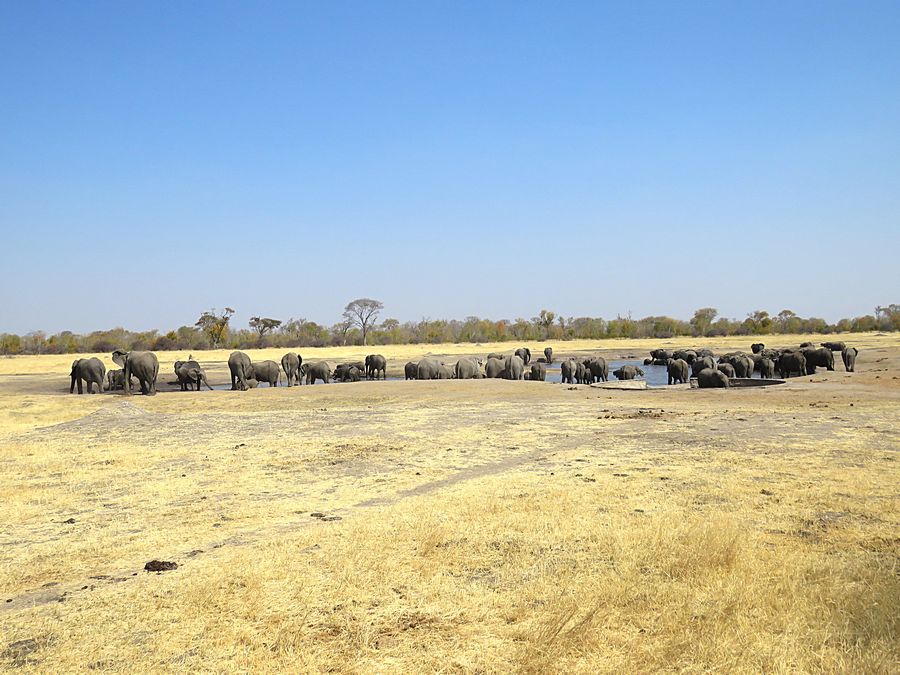
A large herd of elephants at a watering hole near where the buffaloes were.
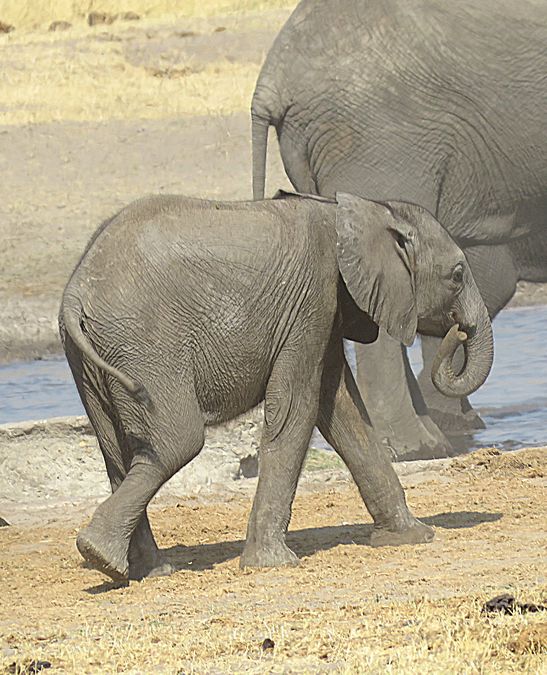
A baby elephant is called a calf and weights about 250 pounds at birth and stands
about 3 feet tall. They can't see well at first, but they recognize their mothers by
touch, scent, and sound.

Aside from looking like fun, mud baths are critical for elephants.
Under the harsh, African sun the heat and UV radiation can be deadly.
Romping in mud not only cools them down, but provides a protective layer
to shield their bodies from the sun’s rays and insects. Since elephant hair
is fairly sparse on their bodies, they can get sunburned; especially
young elephants with sensitive skin. They must either seek shade under
their mother or coat themselves in mud and dust.
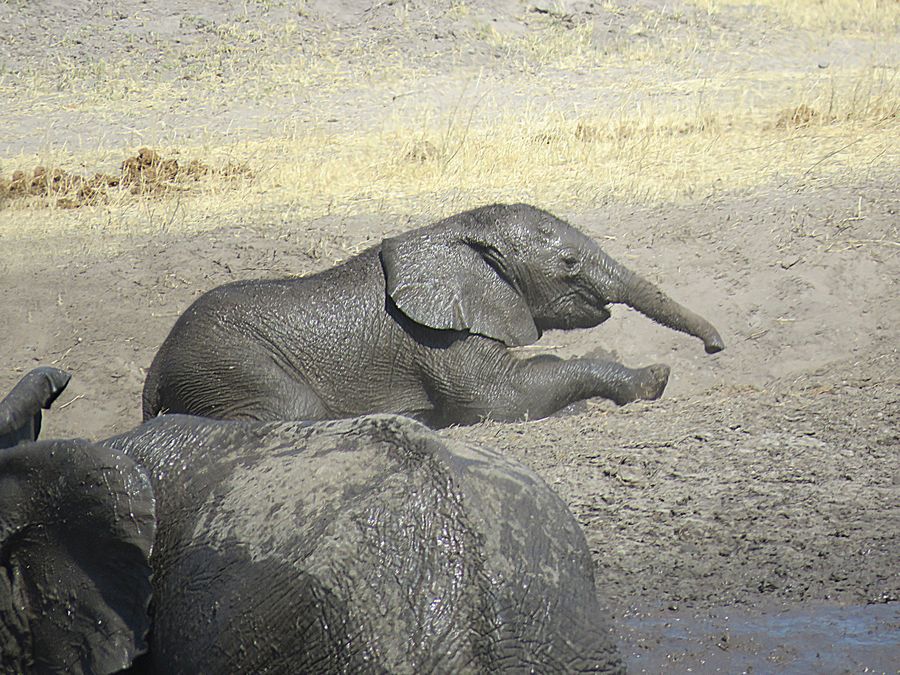
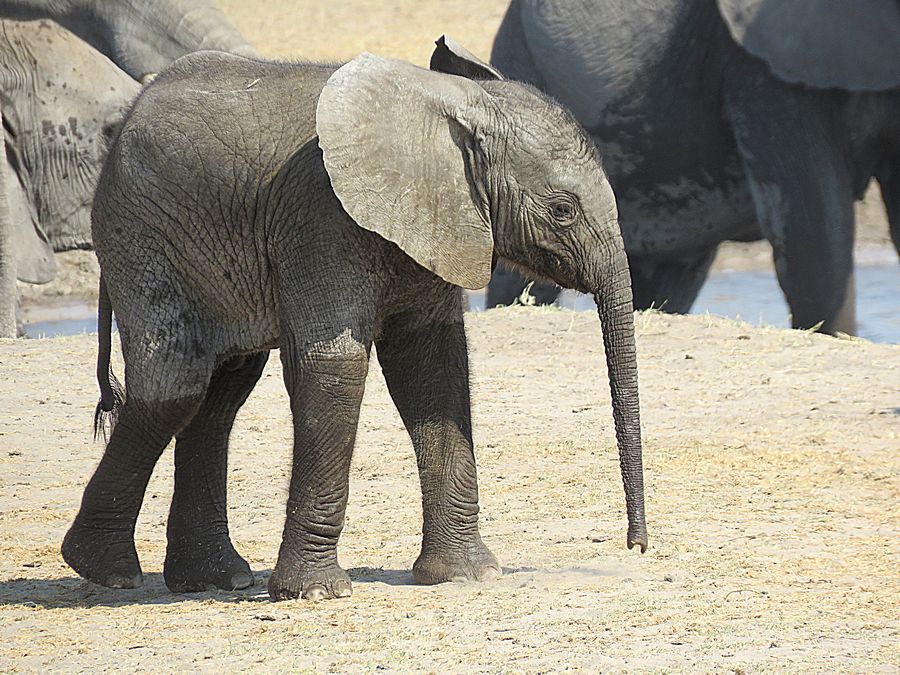
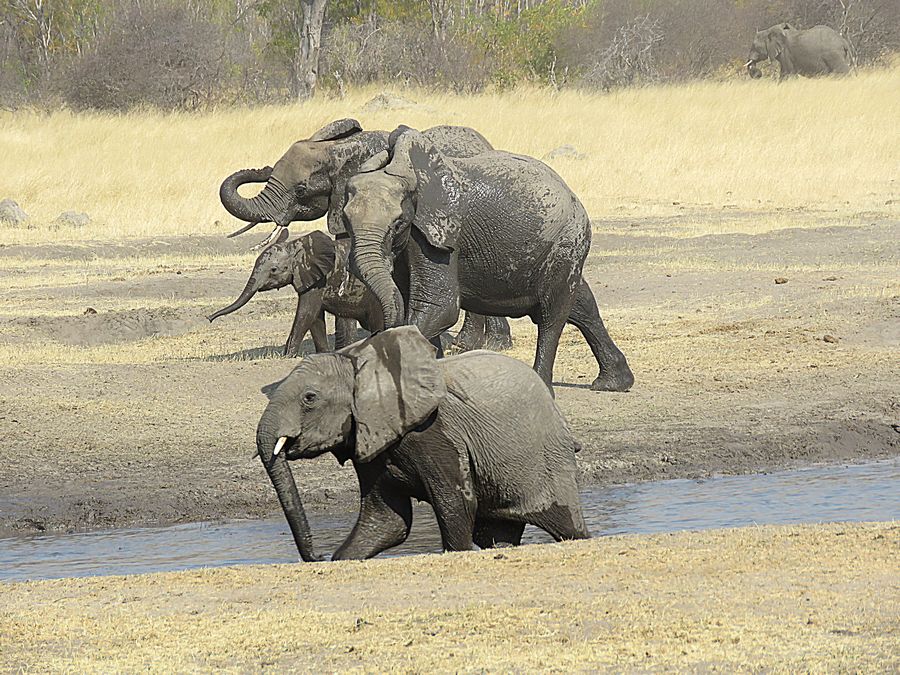
Elephants starting to leave the watering hole.
Baby elephants stay very close to their mothers for the first couple of months.
They drink their mother's milk for about 2 years, sometimes longer.
They drink up to 3 gallons of milk a day. At about four months old,
they also begin eating some plants, but still need milk from their mother.
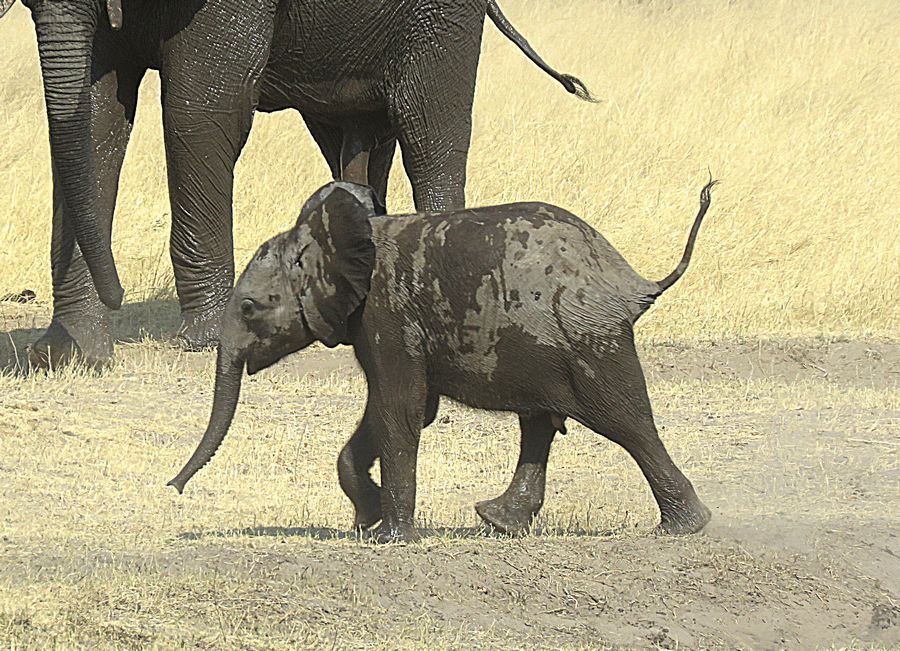
At first, baby elephants don't really know what to do with their trunks.
They swing them to and fro and sometimes even step on them.
They will suck their trunk just as a baby would suck its thumb.
By about 6 to 8 months, they begin learning to use their trunk
to eat and drink. By they time they are a year old,
they can control their trunks pretty well.

Elephant calves are cared for by their aunts, sisters and mother,
with the mother responsible for providing breast milk while the
aunts and sisters guard and babysit the babies.
Because elephant calves are born only one every five years, this
practice allows the young female elephants, known as "allomothers,"
to learn how to care for their own young in the future.
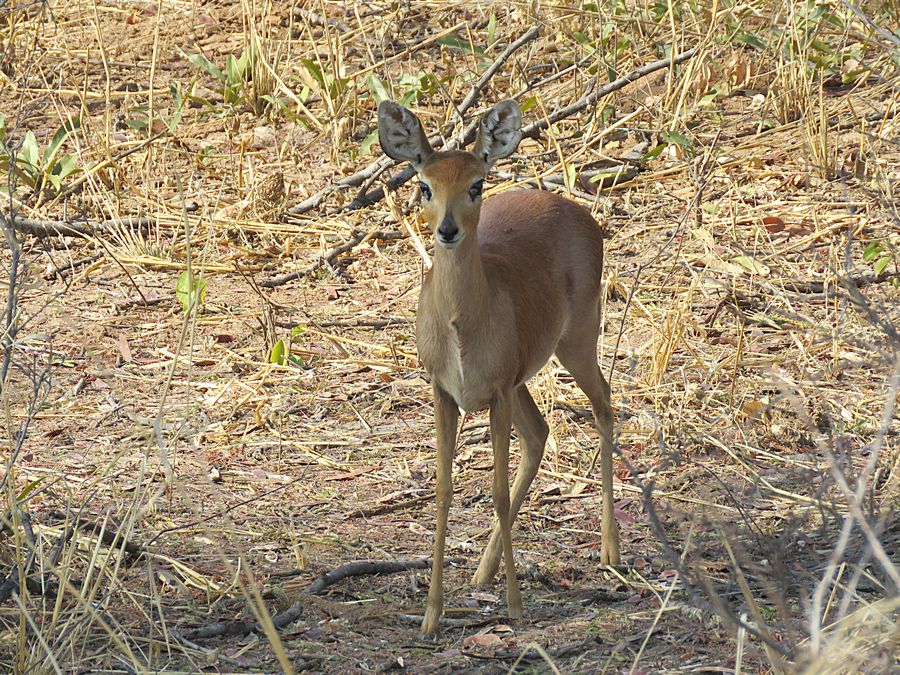
Steenbok - shy, small reddish antelope with large round-capped
ears. Only the male has horns. Active at all hours but rests in
the shade midday. Young are born at any time of the year.
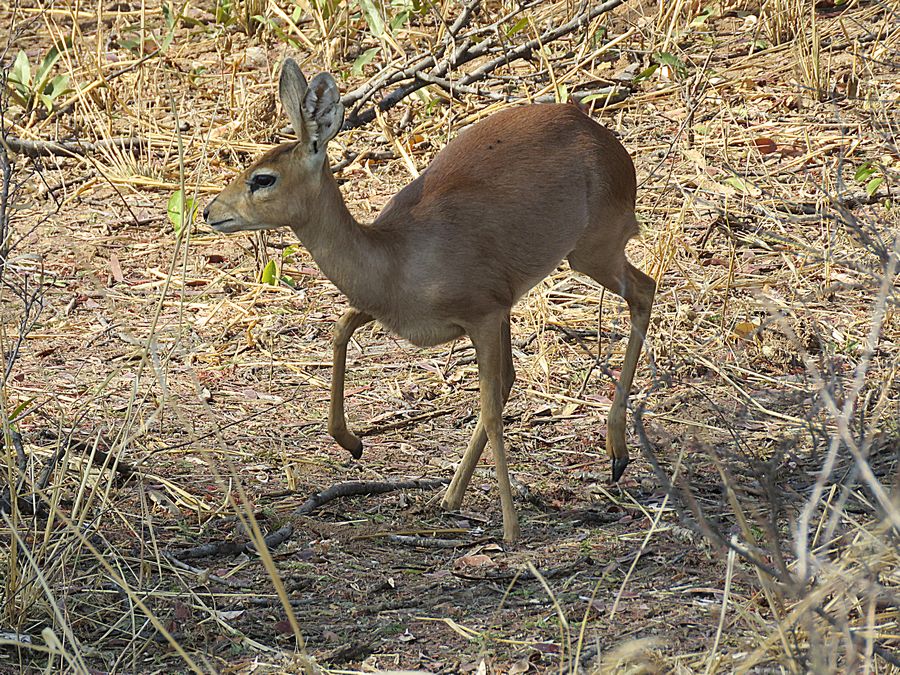
Steenbok starting to run away
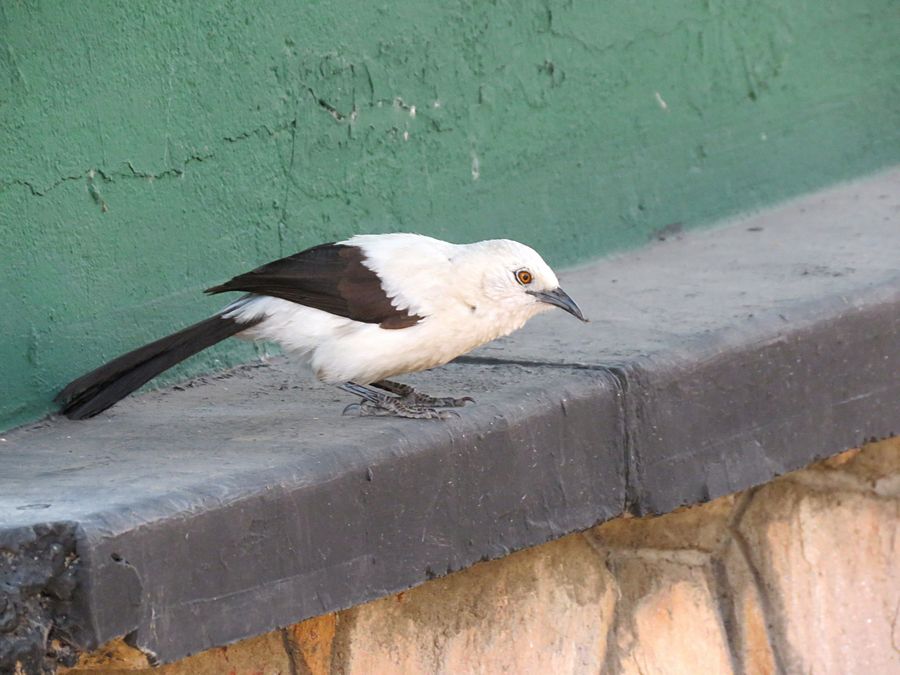
Pied Babbler - bill is black and eyes golden-brown.
Spends much time on the ground looking for beetles
and other
insects.
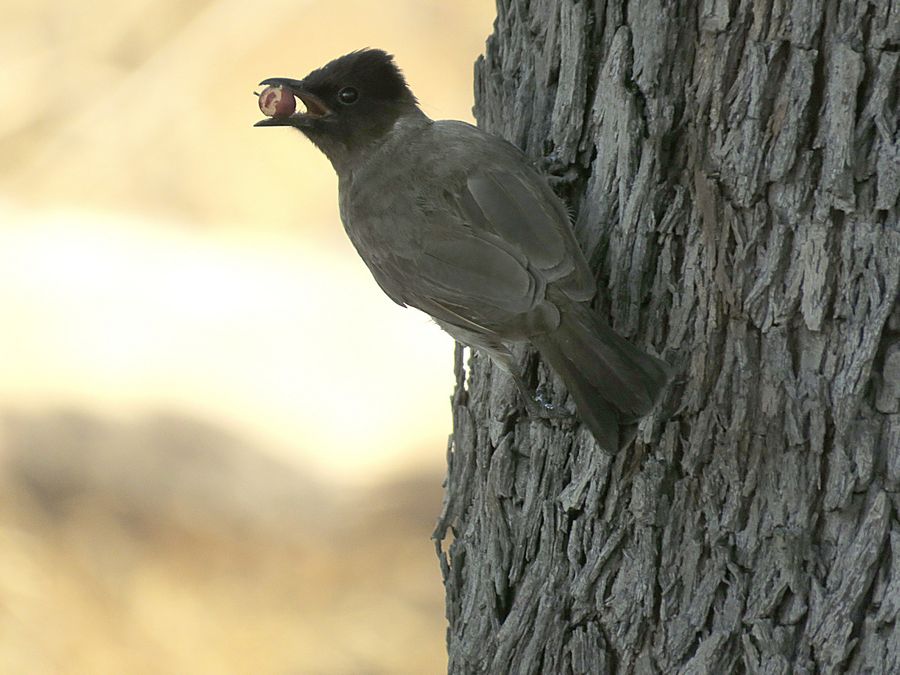
Another grey go-away bird
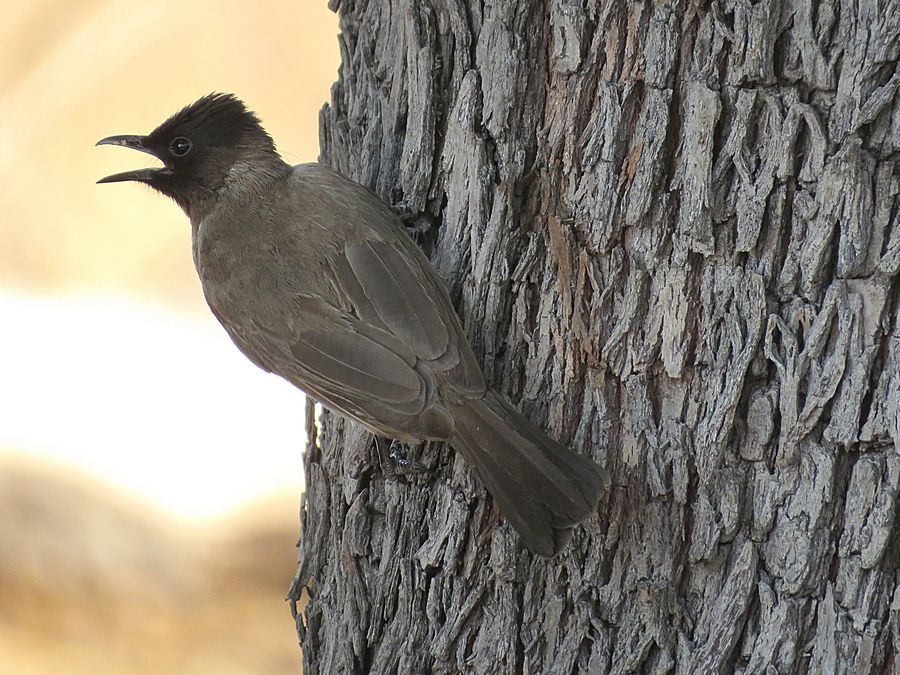

Arrow-marked Babbler - Brown bird with bright orange
eyes and bold, white, arrow-marked streaks on the chest,
crown, and throat. Likes tangled vegetation and is more often
heard than seen. Feeds mostly on insects.
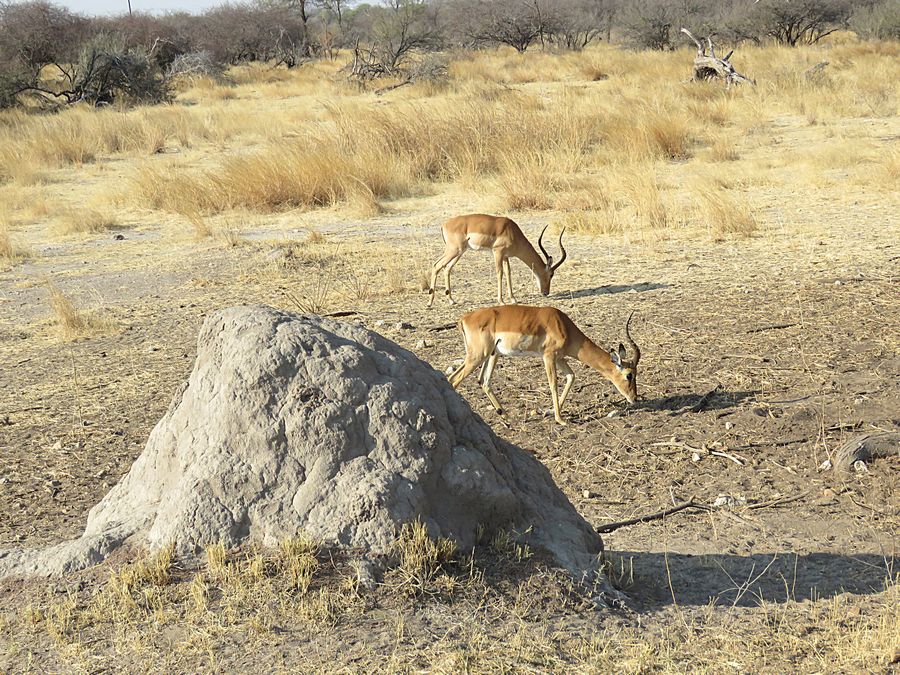
2 male impalas near termite mound. Do you notice
something different
about one of them?
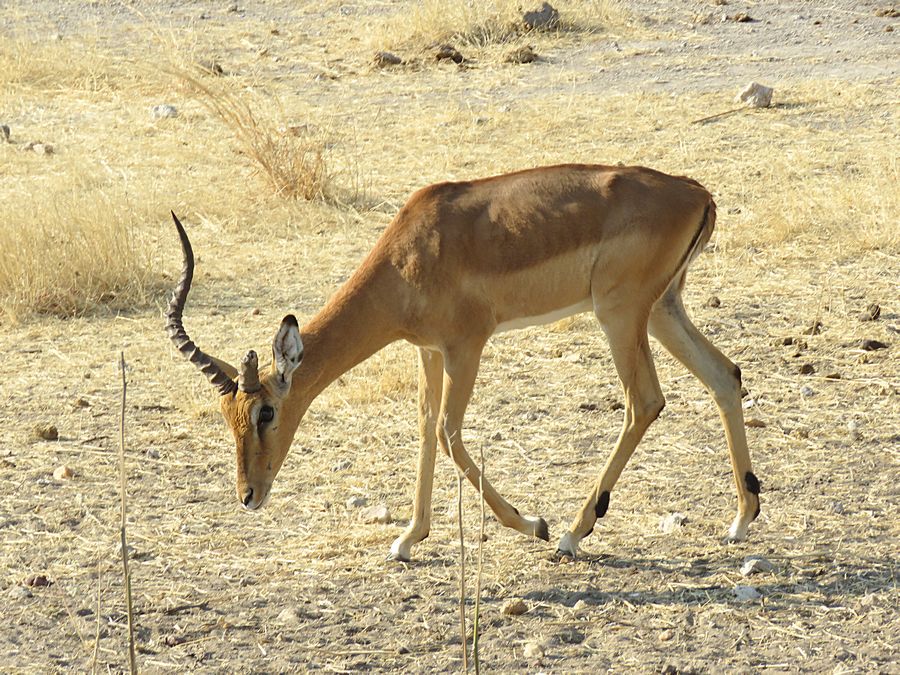
One of the males only had one horn, perhaps the
other was lost in a fight.
Male impalas produce a scent
from a gland on their foreheads to advertise their status to rivals.
When he loses his rank, a male produces less scent. Males
will fight for status and territory throughout the mating season,
using their antlers as weapons.

A sable antelope
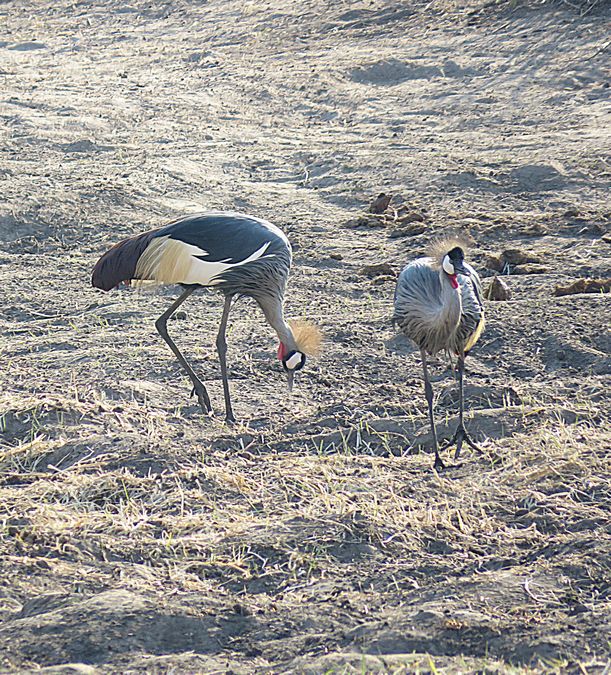
Grey Crowned Crane - Usually found in marshes and on
flood plains. Usually seen in pairs or family parties. Feed on plant
and animal material such as seeds, amphibians, reptiles.
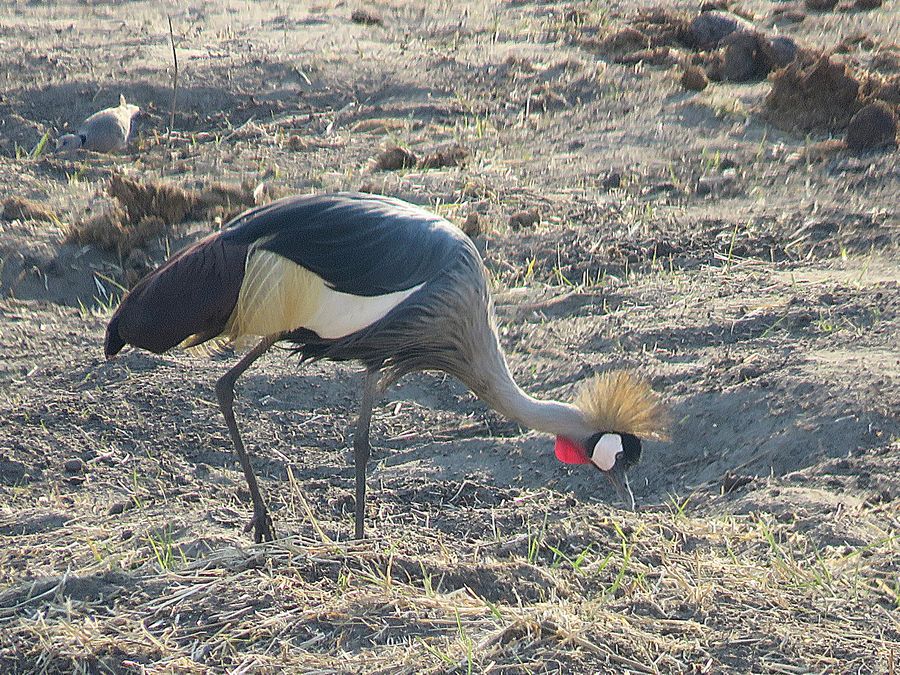
Forehead
and crown are black. Hind crown has stiff crest of yellow feathers.
Sides of the face are white. There is a red wattle on the chin and upper
throat. Bill is black, eyes pale blue. The sexes are similar.
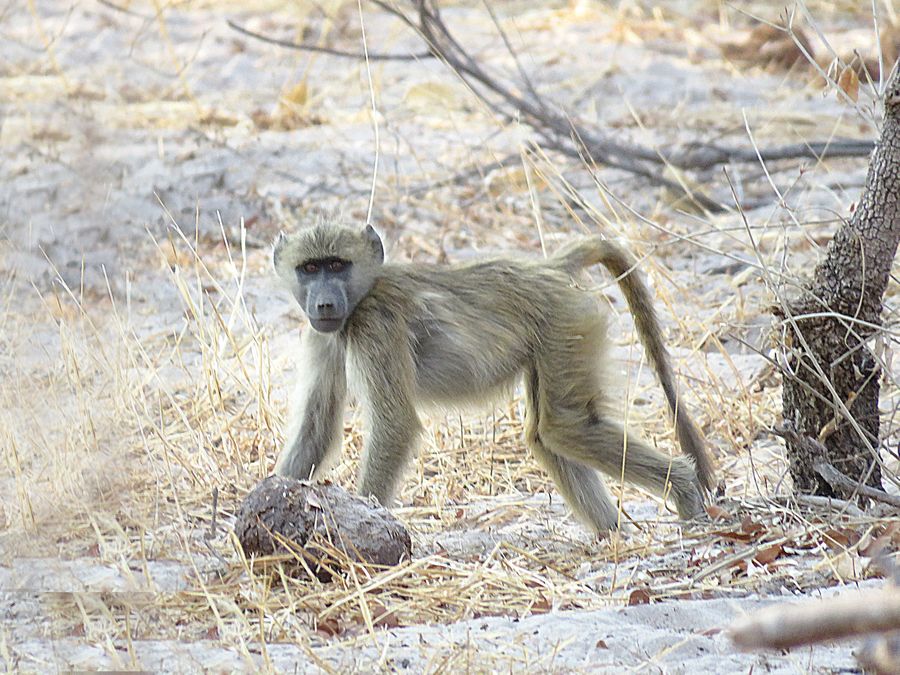
A baboon near the Sable Sands Lodge

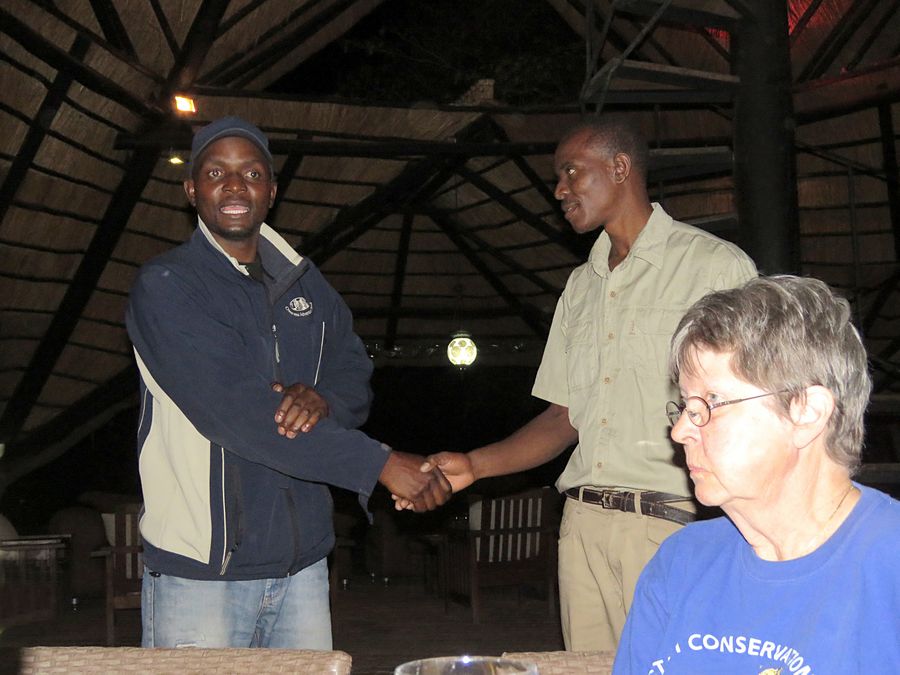
Our guide Tapiwa showing how to shake hands. You put
the left hand on top of your right arm to show you are
not hiding anything in that hand while you are shaking hands.
We also saw people putting their left hand under their right arm
when shaking hands.
Link to Part Four - Victoria Falls
Pat's Home Page